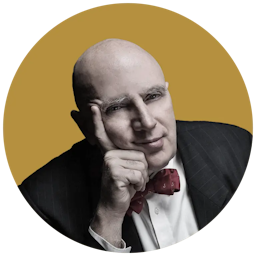Slightly Less Than Legendary
This article is from the archive of The New York Sun before the launch of its new website in 2022. The Sun has neither altered nor updated such articles but will seek to correct any errors, mis-categorizations or other problems introduced during transfer.

Herbie Hancock’s concert on Friday night at Carnegie Hall was the most anticipated event of this year’s JVC Jazz Festival. Produced in partnership with the Thelonious Monk Institute of Jazz, it promised to be an all-star showcase for several generations of jazz standouts but, thankfully, none of the pop acts – most notoriously Christina Aguilera – who appear with Mr. Hancock on his latest album, “Possibilities.” The actual show, however, was disappointing, although there were several exhilarating moments in the course of what turned out to be a marathon performance.
The idea was to feature the great pianist, composer, and bandleader in four contexts representing different aspects of his musical and professional history and personality. The first and last of these groups placed Mr. Hancock, 66, in the company of musicians he worked alongside during his tenure with Miles Davis between 1963 and 1970.
Mr. Hancock’s trio featuring bassist Ron Carter and drummer Jack De-Johnette kicked off the show. This was a nearly perfect mini-set during which Mr. Hancock dusted off some of the compositions from the classic albums he cut for Blue Note Records in the mid-’60s, which remain the finest of his career. He began with “Toys” from 1968’s “Speak Like a Child.” At first, the song was mellow and almost themeless – dark and intriguing, with lots of interplay among the three players – but gradually turned funky and swinging. Next he played a highly personal, paraphrased treatment of “I Thought About You,” the standard that was in Davis’s repertoire during Mr. Hancock’s first year with the trumpeter. He acknowledged Jimmy Van Heusen’s melody only glancingly, and cleverly used its ABAB structure as a way of stealthily backing out of the tune and into his improvisation.
Introducing “One-Finger Snap,” from the 1964 album “Empyrean Isles,” Mr. Hancock told the crowd that the tune “really needs a horn player,” which proved the cue for the major surprise of the evening. The tenor saxophonist Michael Brecker, who has been out of commission while fighting the effects of myelodysplastic syndrome for the last three years, strode onstage triumphantly, as if he had never been away, as the sold-out house leapt to its feet in approval.
Now a quartet, the four men came together in a way I have rarely seen in an all-star jazz concert, and they tore through Mr. Hancock’s oft-recorded composition. When Mr. Brecker reached his high note, almost a multi-phonic climax, it felt like the kind of moment many in the hall would someday tell their grandchildren about.
Unfortunately, the evening never regained that energy. Mr. Hancock then brought out his current band, a quintet featuring Lili Haydn, violin; Lionel Loueke, electric guitars; Matt Garrison (the son of John Coltrane’s bassist, Jimmy Garrison), electric bass; and Richie Barshay, drums. Mr. Hancock seems to have no idea what he wants from this band. The group couldn’t make up its mind where it was going – and took forever in the process.
Mr. Loueke and Ms. Haydn are not jazz musicians, and the leader pretty much stepped aside and let them indulge themselves in their own shtick for much too long. The Benin-born Mr. Loueke engaged in his African-style chanting and picking; Ms. Haydn, a high-glam fiddler who usually tours with rock bands, bowed and moaned in a quasi-folk, New Age kind of a way. Mr. Hancock, surrounded by so many electronic instruments that he looked like he was on the bridge on “Star Trek,” seemed less like the captain of this particular ship than an indulgent uncle or a Little League coach. Things picked up somewhat with the introduction of the guest bassist Marcus Miller, who kicked the band into Mr. Hancock’s funk classic “Chameleon” (from “Head Hunters”).
In the second half, which began around 9:45 p.m. (the concert started at 8), Mr. Hancock turned 180 degrees from music that was vaguely trying to be popular to some challenging sounds that demanded a lot of attention. This was almost too radical a transition. He began with a sequence of two-piano duets with Gonzalo Rubalcaba, the famous Cuban pianist whom Mr. Hancock has long championed. After traversing Mr. Hancock’s most famous composition, “MaidenVoyage,” the duo launched into a free-form improvisation that was lessened by Mr. Hancock’s insistence on screwing around with electronic sound-effect paraphernalia. Wayne Shorter’s most famous tune, “Footprints,” on the other hand, was stimulating, with the two virtuosos constantly switching roles of lead and accompaniment.
The final sequence featured Mr. Shorter playing tenor and soprano saxes, along with bassist Dave Holland and drummer Brian Blade. They played three pieces not known to me, “V (The Visitor),” “Pathways,” and “Prometheus Unbound.” As is usually the case with Mr. Shorter’s performances these days, the music was dense and thorny, yielding few easily accessible pleasures; it’s a lot like the modal music these men were making in the 1960s, but 40 years more abstract and with no immediately apparent points of entrance.
At times the quartet got a boppish groove going, though even then the music was dark and brooding – not exactly easy listening. But for those of us who waited around until the 11 o’clock hour, it was a reminder of how great Herbie Hancock can be when he gets his act together.

